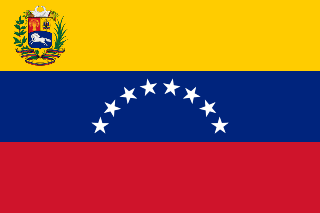This article includes a list of references, but its sources remain unclear because it has insufficient inline citations .(January 2015) (Learn how and when to remove this template message) |
| Cyathea elongata | |
|---|---|
| Scientific classification | |
| Kingdom: | Plantae |
| Division: | Pteridophyta |
| Class: | Pteridopsida |
| Order: | Cyatheales |
| Family: | Cyatheaceae |
| Genus: | Cyathea |
| Subgenus: | Cyathea |
| Section: | Alsophila |
| Species: | C. elongata |
| Binomial name | |
| Cyathea elongata Karsten, 1869 | |
| Synonyms | |
| |
Cyathea elongata is a species of tree fern native to Venezuela and Colombia, where it grows in montane areas at an altitude of 2000–3000 m. The trunk is erect and up to 11 m tall. Fronds are pinnate and usually 2–3 m long. The rachis and stipe are brown, may be smooth to warty and have basal tan scales. Sori occur in small groups towards the base of the pinnule midvein and are covered by cup-like indusia.

The order Cyatheales, which includes the tree ferns, is a taxonomic division of the fern class, Polypodiopsida. No clear morphological features characterize all of the Cyatheales, but DNA sequence data indicate the order is monophyletic. Some species in the Cyatheales have tree-like growth forms, but others have rhizomes.

Venezuela, officially the Bolivarian Republic of Venezuela, is a country on the northern coast of South America, consisting of a continental landmass and a large number of small islands and islets in the Caribbean Sea. The capital and largest urban agglomeration is the city of Caracas. It has a territorial extension of 916,445 km2. The continental territory is bordered on the north by the Caribbean Sea and the Atlantic Ocean, on the west by Colombia, Brazil on the south, Trinidad and Tobago to the north-east and on the east by Guyana. With this last country, the Venezuelan government maintains a claim for Guayana Esequiba over an area of 159,542 km2. For its maritime areas, it exercises sovereignty over 71,295 km2 of territorial waters, 22,224 km2 in its contiguous zone, 471,507 km2 of the Caribbean Sea and the Atlantic Ocean under the concept of exclusive economic zone, and 99,889 km2 of continental shelf. This marine area borders those of 13 states. The country has extremely high biodiversity and is ranked seventh in the world's list of nations with the most number of species. There are habitats ranging from the Andes Mountains in the west to the Amazon basin rain-forest in the south via extensive llanos plains, the Caribbean coast and the Orinoco River Delta in the east.

Colombia, officially the Republic of Colombia, is a sovereign state largely situated in the northwest of South America, with territories in Central America. Colombia shares a border to the northwest with Panama, to the east with Venezuela and Brazil and to the south with Ecuador and Peru. It shares its maritime limits with Costa Rica, Nicaragua, Honduras, Jamaica, Haiti, and the Dominican Republic. Colombia is a unitary, constitutional republic comprising thirty-two departments, with the capital in Bogota.
C. elongata is not conspecific with Alsophila elongata (W. J. Hooker, 1844), which is a synonym of Cyathea poeppigii . For this reason, if the taxon Alsophila is recognised as a genus, this name becomes unavailable. To avoid confusion, Rolla Tryon proposed the specific epithet engelii, commemorating Franz Engel, who collected the type material in Venezuela.

In biology, a taxon is a group of one or more populations of an organism or organisms seen by taxonomists to form a unit. Although neither is required, a taxon is usually known by a particular name and given a particular ranking, especially if and when it is accepted or becomes established. It is not uncommon, however, for taxonomists to remain at odds over what belongs to a taxon and the criteria used for inclusion. If a taxon is given a formal scientific name, its use is then governed by one of the nomenclature codes specifying which scientific name is correct for a particular grouping.
A genus is a taxonomic rank used in the biological classification of living and fossil organisms, as well as viruses, in biology. In the hierarchy of biological classification, genus comes above species and below family. In binomial nomenclature, the genus name forms the first part of the binomial species name for each species within the genus.
An epithet is a byname, or a descriptive term, accompanying or occurring in place of a name and having entered common usage. It has various shades of meaning when applied to seemingly real or fictitious people, divinities, objects, and binomial nomenclature. It can also be a descriptive title: for example, Pallas Athena, Alfred the Great, Suleiman the Magnificent or Władysław I the Elbow-high.


